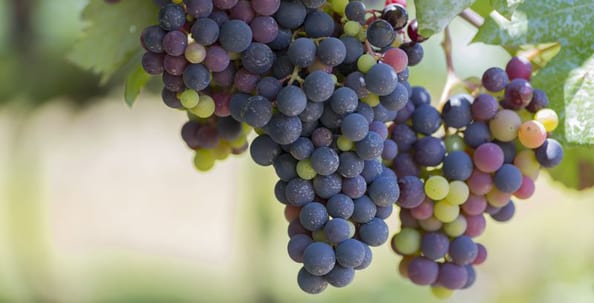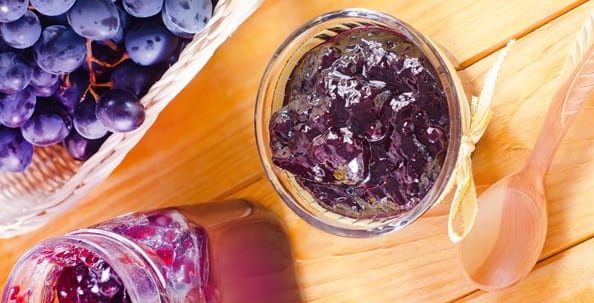Commercially cultivated grapes fall into two categories: those destined to be eaten raw as a fruit and those destined for use in the production of wines. In today’s blog we’ll take a look at how these two types of grape differ and briefly consider just how incredibly healthy grapes are.
If we think about grapes, probably the first thing comes to mind (unless we are lucky enough to have a grapevine adorning our garden) are the clusters of sweet green, black and red grapes that greet us as we tour the supermarket aisles. These ‘eating’ grapes, or dessert grapes, are a fruit so tempting that they invariably find their way into our shopping basket! But what about wine grapes? Although most European wine grapes belong to the same species as the dessert grapes, Vitis vinifera, they are, in many ways, quite different.
We asked our wine expert, Master Sommelier Frank Kämmer, to explain the difference to us:
September and October are traditionally the harvesting months for ripe wine grapes. Anyone who has ever had the opportunity to taste a freshly harvested wine grape will have discovered that the grapes used to produce our delicious wines don’t taste that good when eaten as a fruit. The reason for this is that selective breeding has given rise to two completely different types of grape: dessert grapes and wine grapes. In developing grapes to eat, emphasis is placed on cultivating larger berries with lower acidity and, ideally, these are seedless to maximise enjoyment. In contrast, the grape varieties intended ‘for drinking’, that is for wine pressing, tend to be smaller in size, have a relatively thick skin (which confers aroma) and are seeded. Moreover, the grape varieties that are used in wine production, even when fully ripe, have a higher acidity, as this is necessary to produce a lively and well-balanced wine from the pressing.
Grapes: healthy goodness overload
Since dessert grapes are not a climacteric fruit, i.e. they don’t ripen post-harvesting, they need to be harvested when fully ripe. Needless to say, they taste at their best when they are fresh and this is also when they deliver the most vitamins. Grapes contain valuable vitamins such as vitamins C and B, and they are particularly rich in glucose. Glucose is readily absorbed into the bloodstream, and so it provides a rapid energy boost for the body – a quick glucose shot is particularly helpful when physical and mental energy is needed, such as in stressful situations. So, next time the going gets tough, why not reach for a handful of grapes instead of a handful of chocolate?!

Not only a fresh pleasure
Dessert grapes are a highly versatile ingredient; think way beyond tasty snacking fruit – think fantastic topping for cakes and pastries, think perfect for processing into a jam or jelly. And dried grapes, known as raisins, can be used in an endless variety of ways – they are an ideal complement to muesli, a great addition to a high-energy trail mix, a perfectly delicious snack, and they provide limitless creativity to cooking, baking and brewing. Grapes are also highly suited to juicing and to the production of grape seed oil; but, you might be surprised to know that, both of these products are mostly produced from the wine grape varieties.
Keeping grapes fresher for longer
If you prefer to eat your grapes as a fresh fruit, then it is best to keep them in the refrigerator, as you will reap the benefits in terms of quality and shelf life. Grapes can be kept for up to 12 days in a refrigerator, and for up to 29 days in a Liebherr BioFresh compartment.
So, although dessert and wine grapes are somewhat different characters, whichever way you choose to enjoy your grapes – as a plump, juicy fruit or in a splash of fine wine – you will not be disappointed, and you will be in for a delicious treat!
If you have any questions about this post, then please use the comment function below this post or start/join in discussions with us on Facebook.
